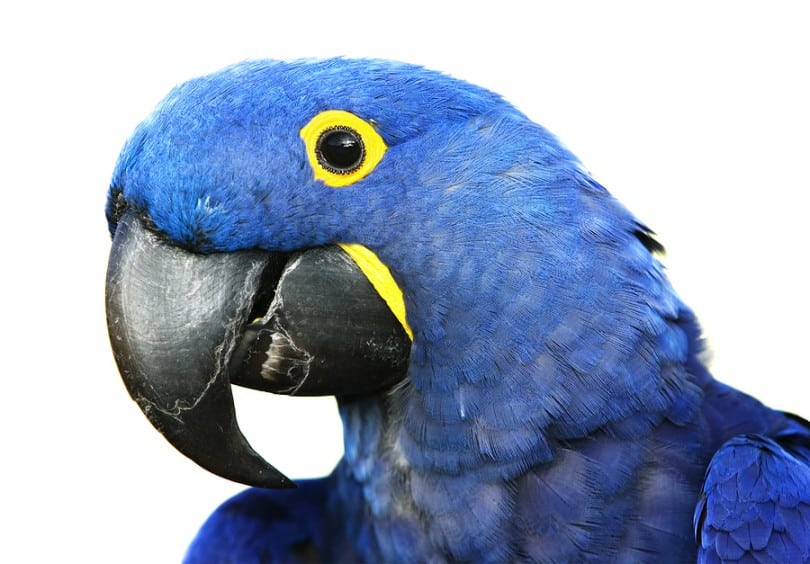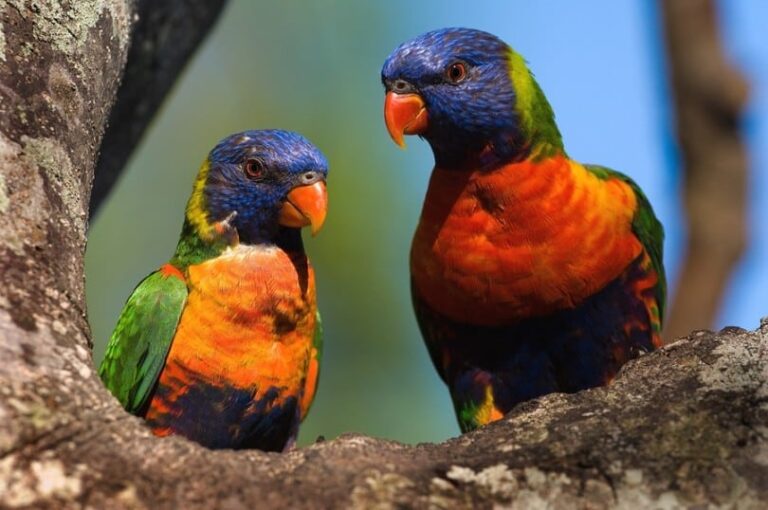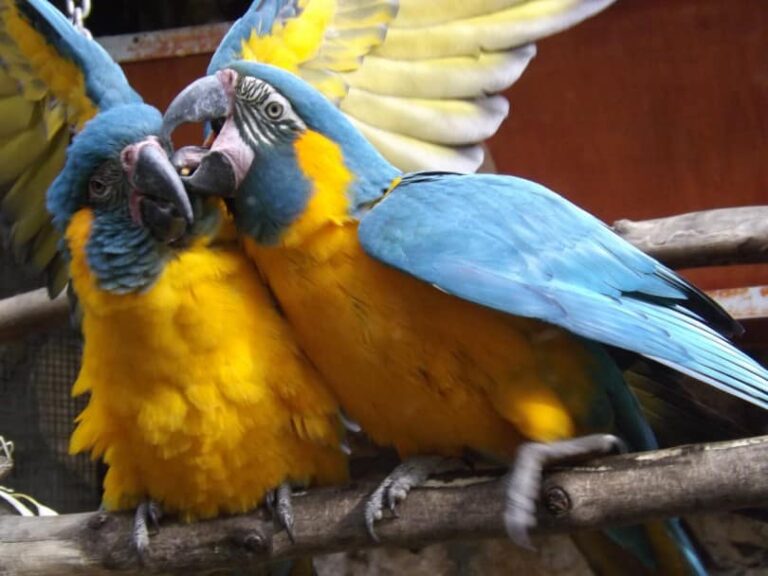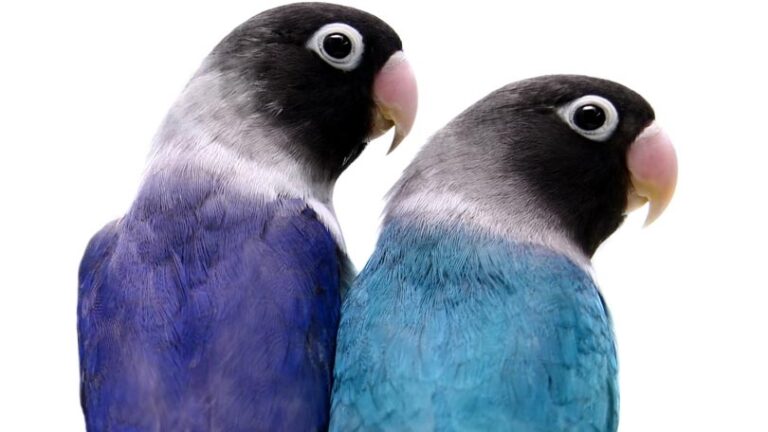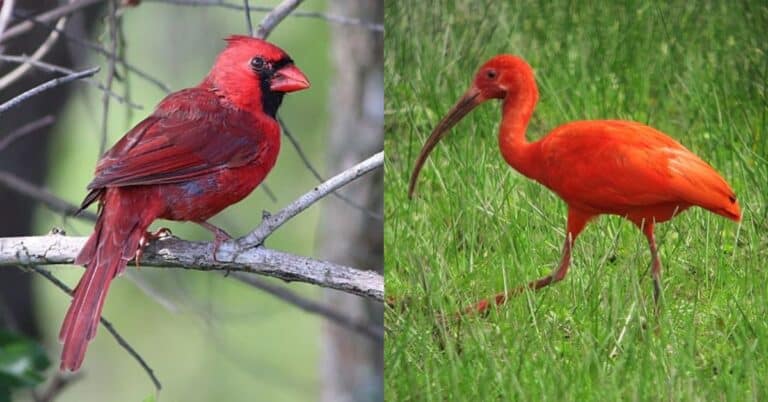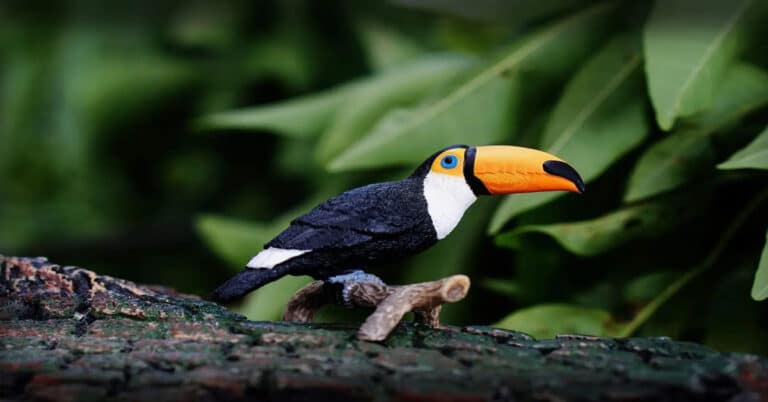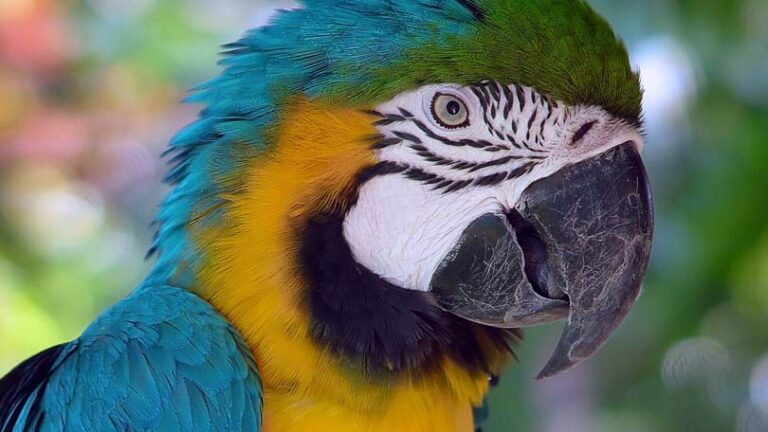Hyacinth Macaw
The Hyacinth Macaw, biologically termed Anodorhynchus Hyacinthinus, is a member of the Psittacidae family and the Anodorhynchus genus. These birds are large parrots, endemic to Brazil. In fact, it is the largest species present in the parrot group with a height of around 3.3 feet. Most of the Hyacinth can fly, except the Kakapo species found in the New Zealand region, which weighs around 3.5 kg. They look very similar to the rare species Lear’s Macaw.
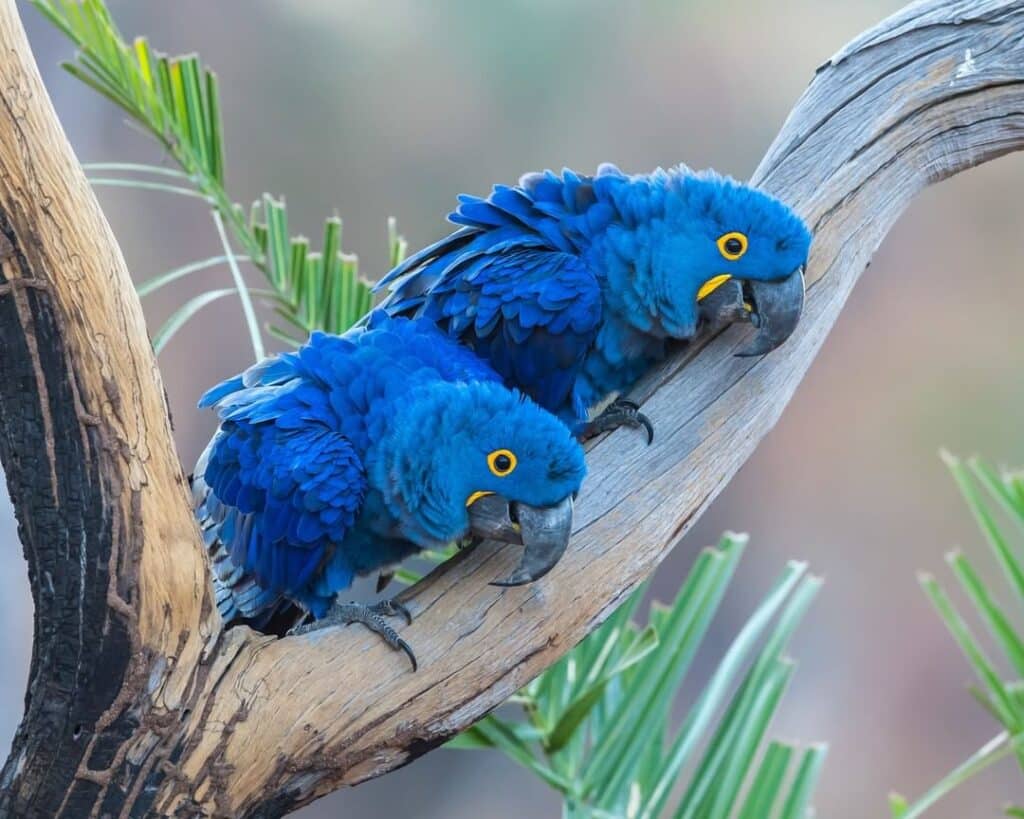
Description
These Parrots are unique and different from the other species. It is the largest bird found ever in the parrot group, and weighs around 1.2 to 1.7 kg and attains a height of more than 100 cm. The wingspan of this bird is around 388 to 425 mm. It has a long tail, which is pointed at the end. The tail and the under portion of the wings are black in color. The beautiful feathers are completely shaded in blue, while the top portion is shaded in pale blue color. The blue color turns into a pale gray near the neck area. The beak is strong and sharp, and enables them to crack their favorite nuts and seeds. The portions like the lower part of the beak and the area circling the eyes have splashes of bright yellow color. They are also the largest type of all the Macaw species. Their unique color, size and appearance make them more popular and recognized among the other birds belonging to the same genus.
Habitat
Ages before, these birds were believed to inhabit in the areas surrounding the North of Brazil, extending to the northern parts of the Amazon. From there, their range extended to the west side toward the Rio Tapajos and southern side to the central Brazil. The other parts, where these birds were found commonly are Piaui, Goias, Maranhao, Bahia, Minas Gerais, Mato Grosso, Eastern parts of Bolivia and Paraguay.
As time passed, they became extinct in their natural habitat, due to the excessive hunting, habitat loss and illegal captivity. Today, this bird can be seen in a small population near Southern Brazil, Southern America and Eastern Bolivia. The nearby places may have a fragmented population of these birds.
Reproduction
The Hyacinth’s breeding season in the wild starts from July till December. They prefer to lay eggs in pre-existing cavities in the old trees. They also breed inside the hollows or crevices in the cliffs. The hollows in the tree are basically 4 to 12m above the ground level, with a diameter of around 50 cm. The depth of the hollow is commonly around 29cm. At home, you can provide a big nest box, but prefer some other material instead of wood or else, these birds can munch on it overnight. The Hyacinths mate for life, and have a great bonding with its pair. The male birds are seen to care for their female counterparts, and take equal responsibility in nest making and child breeding. The female bird lays a maximum 2 eggs in a clutch, which she incubates for 26 to 28 days.
How to Grow At Home
Food
In the wild, the Hyacinth Macaw birds eat nuts, pods and seeds. They prefer nuts of the native palm trees such as Bocaiuva or Acuri, and also like to eat Macadamia nuts. Their beaks are very strong to break the nuts, and their tongue has a special bone that allows it to invade the inside portion of the fruit or nut. At home, you can provide plenty of fruits and vegetables along with these nuts and seeds. The following nut mix can be provided to these birds-:
• 15% filberts
• 10%pecans
• 15% Brazils
• 15% almonds
• 15% walnut
• 30% macadamia
Other than these foods, a regular supply of a pellet diet is necessary to cover up any deficiency in the diet. Regular supply of fresh water is another important aspect of the bird’s diet.
Cage
The cage size should not depend on how much time these pets spend inside the cage. Whether they spend 2 hours or 10 hours, they must be provided with a spacious cage, big enough to regularly flap their wings and move around. There must be enough space to place few perches and toys, and it should not be an obstacle for flapping their wings or while doing exercise. The minimum cage size requirement for a Hyacinth Macaw is 46 inches wide, 72 inch height and 36 inch deep. A small cage may cause choking or injury to the bird’s wings. The birds will feel free and comfortable, only if the cage is spacious and clean. Cages like dome tops are preferable as they are very spacious and roomy.
Care
Like all the other parrots, the Hyacinth Macaw too requires enough attention and care. They can go neurotic or cranky, if left alone. But basically, they are very social and affectionate creatures. Provide them with wooden toys to play and chew. They must be trained well to behave with the human counterparts, as some can harm you with their strong beaks. The cage and the vessels should be cleaned regularly. They cannot be left alone, as they will start to scream and self-mutilate. If you cannot spend enough time with your pet, then get a pair of these birds. They like to mingle with other birds, especially from the New World Parrot group.
Personality & Behavior
These birds are wonderful creatures, with unique appearance and incomparable strength. They are good at mimicking human speech and other sounds that they hear often in their surroundings. They are often termed as “gentle giants”, because, if provided proper training, they can be wonderful pets. They are very intelligent and wise enough to quickly learn the words. They mingle very well, even with strangers. You should take care to provide all the necessary housing and food requirements to make them feel comfortable, lest they turn cranky and naughty. They scream in loud noise and can be a nuisance for the neighbors. They also have the habit of chewing things. You can provide them with enough wooden toys to play and chew on, or they can destroy the cage or your furniture, if left in the open.
Health & Common Conditions
A Hyacinth Macaw can be kept healthy and hygienic by trimming their nails, clipping their feather, trimming their overgrown beaks and regular bathing. Other main factors to keep away diseases and to keep them healthy are a hygienic cage and a healthy and nutritious diet; this can also increase their life span. Similar to the other species of Macaw, the Hyacinth Macaw is also prone to diseases like Proventricular Dilatation disease, Papillomas and Psittacosis. Take your pet for a regular check-up to the veterinary doctor; this may help to keep away diseases and control any already affected disease.

Having discovered a fondness for insects while pursuing her degree in Biology, Randi Jones was quite bugged to know that people usually dismissed these little creatures as “creepy-crawlies”.

